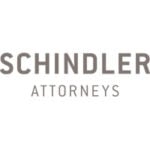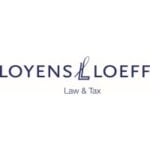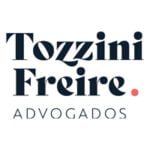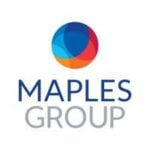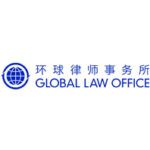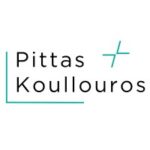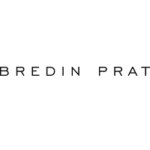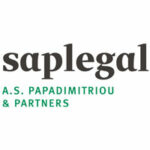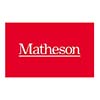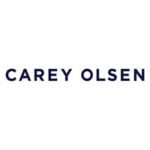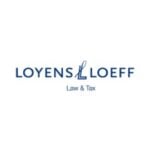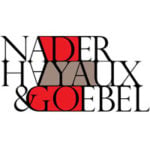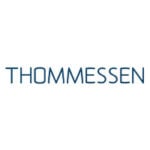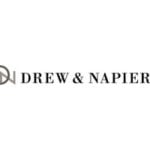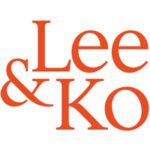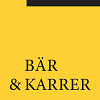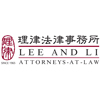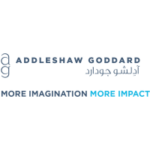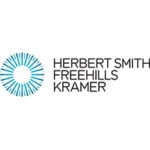-
What proportion of transactions have involved a financial sponsor as a buyer or seller in the jurisdiction over the last 24 months?
Based on publicly available sources the total deal volume relating to Dutch targets over the past 24 months’ period was approximately 2047 deals. Transactions involving financial sponsors as a buyer or seller during that time represented approximately 45% of this total number of transactions.
-
What are the main differences in M&A transaction terms between acquiring a business from a trade seller and financial sponsor backed company in your jurisdiction?
Financial sponsors will seek a clean exit and statistically more often dispose of assets through a controlled auction. This is one of the reasons that financial sponsors favour the locked box approach, which provides the possibility to distribute the consideration more quickly. The absence of any post-completion adjustment eliminates the need to hold back funds in case such adjustment works against the seller. For the same reason, financial sponsors are sometimes only prepared to stand behind a limited set of so-called “fundamental” warranties (i.e. due existence, due authority and title to shares). Therefore, buyers of businesses owned by financial sponsor usually take out warranty and indemnity insurance to ensure that business warranties can be obtained, and that these warranties are backed by appropriate financial protection. When acquiring a business from a trade seller certain carve-out issues may come into play. Whether and to what extent this is the case very much depends on whether the business to be acquired is already being run as a stand-alone business. If no robust stand-alone accounts are available a locked box approach may not be a viable option. Moreover, if there is an interdependence between the business being sold and the seller’s remaining operations, there may be a need for transition services agreements and/or other arrangements to be put in place.
-
On an acquisition of shares, what is the process for effecting the transfer of the shares and are transfer taxes payable?
Process for effecting the transfer of the shares
The transfer of registered shares in the capital of a Dutch limited liability company or a public limited company of which the shares are not listed on a stock exchange requires the execution of a deed of transfer between the transferor and the transferee before a Dutch civil law notary. Unless the company itself is a party to the notarial deed of transfer for acknowledgement of the transfer (which is usually the case), the rights pertaining to such shares can only be exercised after the company has either acknowledged the transfer of the shares or the notarial deed of transfer has been formally served to the company by a court bailiff. To avoid the necessity for parties to travel to the Netherlands, the deed of transfer can be executed on the basis of powers of attorney. The civil law notary executing the deed will require certain specific signing and KYC requirements to be met. The notary will require the power of attorney to be provided with a legalisation (notarisation) statement and furnished with an apostille of the Hague Convention of October 5th, 1961 or a similar procedure if the country involved is not a member of the Hague Convention. In addition, in case foreign entities are a party to the deed of transfer, the notary will require a statement of a notary practicing in relevant jurisdiction or a lawyer admitted to the relevant bar confirming the authority of the signatories to the power of attorney to represent such legal entity.
In the Netherlands, it is common practice (but not required) that the purchase price for the shares is paid into the third-party account of the notary who will execute the deed of transfer. Such notary will hold the purchase price on behalf of the buyer until the execution of the deed of transfer (which is the moment that the legal title to the shares passes to the buyer) and following execution of the deed of transfer it will hold the purchase price on behalf of the seller(s). If concurrently with the transfer of shares, the target entity is refinanced, this funds flow usually also runs through the third party notary account. Ordinarily, the notary, the buyer, the seller(s), the existing lenders and the new lenders enter into a notary letter in which the arrangements with respect to the flow of funds and release and vesting of security in respect of the shares are laid down.
No transfer taxes payable
The acquisition of shares in a company is in principle not subject to Dutch value added tax or Dutch transfer taxes. However, Dutch real estate transfer tax is levied on the acquisition of shares or similar rights in a ‘real estate company’ (i.e., a company the assets of which consist of more than 50% of real estate, whether Dutch or foreign, and at least 30% of those assets is Dutch real estate, provided such real estate is or was mainly used at that time for the acquisition, sale or exploitation of such real estate), if the buyer, together with its affiliates, acquires or extends an interest of one third or more in such company. The default Dutch real estate transfer tax rate is 10.4%. A 2% rate applies if it concerns owner occupied residential real estate (residential real estate acquired for other purposes is subject to the default rate). First-time homebuyers can benefit from a full exemption under certain conditions. The Netherlands does not levy stamp duty or similar taxes of a documentary nature.
-
How do financial sponsors provide comfort to sellers where the purchasing entity is a special purpose vehicle?
Where the purchasing entity is a special purpose vehicle, financial sponsors often provide comfort to sellers by providing an equity commitment letter from the purchasing fund. If the acquisition by the special purpose vehicle is funded through external financing, buyers will seek to provide the sellers with debt commitment letters from banks before the signing of the SPA.
-
How prevalent is the use of locked box pricing mechanisms in your jurisdiction and in what circumstances are these ordinarily seen?
In the Netherlands, locked box pricing mechanisms are still used in the majority of transactions. The locked box approach is the favoured approach of selling financial sponsors, allowing a clean exit and providing the possibility to distribute the consideration more quickly. The absence of any post- completion adjustment eliminates the need to hold back funds in case adjustment works against the seller. It may be problematic for a buyer to agree to a locked box mechanism where the target is carved-out from a larger group, since it is easier for the seller to manipulate leakage from the target, for example, by hedging agreements, allocation of group overheads, current accounts and intra- group trading. Generally, however, if carefully drafted, the indemnity for leakage should provide for an adequate remedy.
-
What are the typical methods and constructs of how risk is allocated between a buyer and seller?
In the Netherlands, risk is most commonly allocated between a buyer and a seller through warranties and specific indemnities. In addition, parties sometimes allocate the risk of changes in circumstances between signing and closing by including a MAC clause, although this is not very common.
It is common practice for the seller to give warranties relating to the business that is being sold. Several factors influence the scope of the warranties. The scope and outcome of the due diligence investigation is often an important factor in this regard.
Warranties
It is common practice for the seller to give warranties relating to the business that is being sold. Several factors influence the scope of the warranties and the scope and outcome of the due diligence investigation is often an important factor in this regard.
The seller will seek limitations to the scope of the given warranties. This is often done by qualifying the warranties against disclosures made during the due diligence process. It is common practice for the seller to seek to disclose the entire contents of the data room.
Other customary ways in which a seller tries to reduce the scope of warranties are limiting the scope to matters which qualify as ‘material’ to the business or matters within the (actual or constructive) knowledge of the sellers.
It is common to specify a maximum amount for which the seller can be held liable in the event of a warranty breach. We often see ranges between 10% and 30% of the purchase price for non-W&I insured transactions. The amount of the cap as a proportion of the purchase price tends to be inversely proportional to the deal value of the transaction. This cap will typically not apply to claims in respect of: (i) certain fundamental warranties (e.g., those relating to title); (ii) tax, and (iii) fraud, wilful misconduct, or intentional recklessness on the part of the seller. In addition, limitations of the amount of the seller’s liability usually include both a de minimis threshold for individual claims as well as an aggregate de minimis threshold (‘basket’) for all damage claims taken together. As a very general rule of thumb, the market usually refers to a basket of 1% of the purchase price and a de minimis of 0.1%.
These thresholds do not typically operate as deductible amounts, and thus claims exceeding the thresholds are usually eligible for recovery of the entire amount of the claim, a so called ‘tipping basket’.
The seller’s obligation under the warranties is, moreover, typically made subject to limitations in time. A general limitation in time of the seller’s obligation for claims under the warranties is included in almost all acquisition agreements.
Dutch acquisition agreements often provide for a time limit tied to a full audit cycle to give the buyer the opportunity to discover any problems with its acquisition (i.e. 18 months following completion). Time limits will generally be longer for claims for breach of certain fundamental or specific warranties: (i) for title warranties, the time limit is often either the applicable statute of limitations or a period of 5 years after completion, (ii) for claims for breach of environmental warranties, the buyer will typically be able to bring a claim within five to seven years of completion and (iii) for tax warranties, this will typically be within a short period after the last day on which a tax authority can claim the underlying tax from the target.
Indemnities
In addition to warranties, a purchaser will want to include indemnities to cover specific risks identified during due diligence (e.g. tax, pending litigation or environmental pollution) of which it is difficult to identify the exact extent and thus the associated costs.
Specific indemnities are not qualified by disclosure and are not (entirely) subject to the agreed limitations of liability (e.g. time limitation, de minimis and basket). Indemnities are mostly given on a euro for euro basis. In most cases indemnity claims will be subject to a separate cap (often the liability will be limited to an amount equal to the purchase price).
MAC clauses
It should also be noted that in transactions with a deferred closing, “Material Adverse Change” (“MAC”) clauses are sometimes used to allocate risks related to changes of circumstances in the period between the signing of the acquisition agreement and the closing of the transaction. Under a MAC clause, the buyer may terminate the acquisition agreement if there is a material negative change of circumstances during such period. MAC clauses are usually included as a condition precedent to closing, but sometimes also take the form of a “backdoor MAC”, i.e. a warranty by the seller regarding the absence of a material adverse change between signing and closing in combination with a termination right of the purchaser for breach of warranty. A recent deal point study relating to M&A transactions in Europe showed that only 10% of the deals in Europe have a MAC clause.
-
How prevalent is the use of W&I insurance in your transactions?
Warranty and indemnity (W&I) insurance is frequently used in Dutch transactions, especially when a (financial sponsor) seller is looking for a clean exit. A recent deal point study shows that in 2022 the use of W&I insurance in European studies has stabilised, while the years before, there was a consistent increasing trend. There seems to be a correlation between the use of W&I insurance and the deal size, meaning that the larger the deal size the more probably it is that a W&I insurance will be used, although the use of W&I insurance in smaller deals is on the rise.
W&I insurance may provide for an elegant solution to the security issue. In general, one of the reasons to enter into a W&I insurance is that it can smooth the negotiation process by avoiding intensive discussions regarding representations and warranties between the seller and the buyer. It may contribute to maintaining a friendly commercial relationship between the seller and the buyer. Moreover, from a seller’s point of view a W&I insurance is also considered a powerful tool to achieve a cleaner exit through the reduction of residual seller liability. In addition, the return on investment could be higher compared to leaving part of the proceeds on an escrow account or to provide any other form of security. From a buyer’s point of view, the buyer will likely obtain a more extensive list of seller’s warranties. A downside for a buyer is that not all warranties will be covered by W&I (general exclusions are pension underfunding, transfer pricing, environmental matters and civil, criminal or administrative fines or penalties). There are two main types of W&I insurance: a “buy-side” insurance, where the buyer is the insured party, and a “sell-side” insurance, where the seller is the insured party. A buyer’s policy covers the buyer for damages resulting from a breach of the warranties or a claim under the (tax) indemnity. Instead of claiming its damages from the seller, the buyer has direct recourse against the insurer. A seller’s policy is less common than a buyer’s policy and allows the seller to recover amounts it is required to pay the buyer for a breach of a seller warranty or a claim under the (tax) indemnity from the insurance provider. The most common structure in this context is a seller pre-wiring the W&I insurance in the context of an auction process and the buyer ultimately taking out the insurance policy. The terms of the insurance policy are generally in line with European W&I standards (usually non-Dutch insurers are engaged for the provision of the W&I insurance). Insurers also offer policies including a knowledge scrape (i.e. some or all of the knowledge qualifiers in the acquisition agreement do not apply to the insurance coverage).
-
How active have financial sponsors been in acquiring publicly listed companies?
The uptick in public M&A activity that we saw in 2023 did not persist in 2024. Although a handful of take private transactions have been announced, the activity remained around the same level of 2023. There remained a decent mix of more strategic buyers and (contemplated) public M&A transactions involving a financial sponsor. In particular, listed SMEs are being eyed as a number of them are seemingly undervalued. There does not seem to be a particular focus in terms of infrastructure or other asset-classes.
-
Outside of anti-trust and heavily regulated sectors, are there any foreign investment controls or other governmental consents which are typically required to be made by financial sponsors?
Introduction
Following the EU FDI screening Regulation (2019), the Netherlands has several FDI screening mechanisms:
- a general FDI screening mechanism: the Investment Screening Act which entered into force on 1 June 2023 and has partly retroactive effect for transactions as of 8 September 2020;
- a sector specific FDI screening mechanism for the telecommunication sector: the Act Undue Influence Telecommunication which entered into force as of October 2020;
- sector specific FDI screening mechanisms for the energy and gas sector which has been in force since 2012; and
- a sector specific FDI screening mechanism for the off shore wind energy sector which entered into force on 1 January 2024.
In addition, the Dutch legislator has published a new legislative proposal: the Defence and Security-Related Industry Resilience Act (the Defence Resilience Act). The Defence Resilience Act will introduce amongst other a sector specific FDI screening regime for the defense sector. The sector specific regime is expected to apply to two types of companies: (i) companies involved in military equipment or transportation suppliers, and (ii) essential military suppliers, designated as such by the Dutch Minister of Defense.
General FDI screening mechanism
The general FDI Screening mechanism applies to:
- the acquisition of control over (a part of) managers of corporate campuses, vital providers or companies active in the field of sensitive technology; and
- the acquisition or increase of significant influence in certain companies active in the field of sensitive technology.
The first category of companies that fall within the scope are managers of corporate campuses. On 19 June 2024, the BTI published a policy rule regarding transactions involving managers of corporate campuses. The second category of companies that fall within the scope, vital providers, is defined as companies that operate, manage or make available a service whose continuity is vital to Dutch society. The FDI screening mechanism applies to certain providers of: (i) transport of heat, (ii) nuclear facilities, (iii) air transport, (iv) port operations, (v) banking services, (vi) infrastructure for the financial markets, (vii) extractable energy qualify as vital provider, and (viii) mangers of tech business campuses. The third category, providers of sensitive technologies, includes in any case strategic goods (dual use and military goods) and certain highly sensitive technology such as semiconductors, high assurance, photonics and quantum technology.
The Dutch Minister of Economic Affairs (the Minister) shared its intention to broaden the scope of the Dutch FDI Act to include ‘new technologies’, including artificial intelligence, biotech, advanced materials, nanotechnology, sensor technology, navigation technology and medical isotopes.
The general FDI screening mechanism contains a notification obligation. Upon notification the Minister will assess, amongst others, the transparency of the ownership structure, the geopolitical situation of the investor’s country of origin (direct and indirect), pending sanctions against the investor, and the investor’s track record. Transactions that have taken place after 8 September 2020, but before the entry into force of the new regime only have the be notified upon request of the Minister.
Investments made in violation of a prohibition issued by the Minister are in principle void. The Minister may impose an administrative fine of up to 10% of the group turnover of the companies concerned.
Sector specific regimes
The Act Undue Influence Telecommunication
The Act Undue Influence empowers the Minister to veto the acquisition or holding of a controlling interest in a telecommunication party for national security or public order reasons. This law provides for a duty to report the intention of acquiring a controlling interest in a telecommunication party if this interest leads to a significant influence in the telecom industry. Telecommunications party is broadly defined and includes not only traditional telecom providers, but also, for example, data center providers. Whether the acquisition leads to relevant influence in the telecommunications sector is, amongst others, based on the number of end-users of the provider and acquirer and/or the fact that service are provided to certain governmental authorities.
The Gas Act and Electricity Act 1998
Under the Gas Act, a change of control in an LNG installation or an LNG company must be notified to the Minister. Under the Electricity Act 1998, a change of control in a production installation with a nominal electric potential of more than 250 MW or a company that manages a production installation with a nominal electric potential of more than 250 MW must be notified to the Minister.
The Offshore Wind Energy Act
The Minister assess the parties bidding for a permit to operate in an offshore wind energy under the Offshore Wind Energy Act and the Implementation Scheme for Offshore Wind Energy. In addition, the Minister assesses changes of (control over) permit holders of wind farms that are not yet operational.
-
How is the risk of merger clearance normally dealt with where a financial sponsor is the acquirer?
If merger clearance is required, it is standard practice to include this as a condition precedent to the closing of the transaction in the acquisition agreement. Merger clearances involving financial sponsors usually do not trigger competition issues, unless the financial sponsor has portfolio companies having overlapping activities with the business of the target. Depending on the parties’ bargaining powers, we see several practices for the allocation of the risk of merger clearance between the parties, ranging from hell or high water-clauses to the benefit of the sellers to a walk- away right for the purchaser. Often, the purchaser bears the risk of any divestments, although it is not uncommon for risks to be capped in one way or another (e.g. the buyer is not obliged to offer divestments to the competent competition authorities that are disproportionate to the contemplated transaction or which would have a material adverse effect to the business of the buyer group (including the target)).
-
Have you seen an increase in (A) the number of minority investments undertaken by financial sponsors and are they typically structured as equity investments with certain minority protections or as debt-like investments with rights to participate in the equity upside; and (B) ‘continuation fund’ transactions where a financial sponsor divests one or more portfolio companies to funds managed by the same sponsor?
We have noticed an increase in the number of funds specializing in minority investments. In addition, we have seen an increase in co-investment opportunities being offered. Most minority investments by financial sponsors are structured as straight equity investments. In the case of straight equity investments, financial sponsors typically subscribe to a capital increase of the target company in return for shares with preferred rights on dividends and liquidation proceeds as well as certain special rights bestowing control, or at least influence, over the company. Typical minority protections sought by financial sponsors include right to information by periodic reporting, right to appoint board members and/or the right to appoint a board observer, and consultation or veto rights concerning certain decisions to be taken by the board of directors or the shareholders’ meeting. Moreover, certain “exit clauses” are usually sought by financial sponsors, the most common being standstill provisions, right of first refusal, drag-along and tag-along clauses, as well as put-options. Minority investments typically occur more in early stage funding such as venture capital investments.
-
How are management incentive schemes typically structured?
Management incentive schemes are typically structured by means of a leveraged equity participation, i.e. a direct or indirect participation in the ordinary share capital of the portfolio company, while most of the equity investment is financed with fixed yield instruments such as preferred shares and/or shareholder loans. Usually management solely or predominantly invests in ordinary shares (sweet equity) (generally a stake between 10% – 15% in total and sometimes between 15% – 20% in total, whereby the latter can be considered very generous) and the financial sponsor invests in a combination of fixed yield instruments and the remainder of the ordinary shares (strip). The participation of management in sweet equity is usually subject to good-, bad- and early leaver provisions. Depending on the situation, certain managers may be invited (or urged) to invest a certain amount in the strip too and sometimes an exit ratchet is being offered to management (depending on the money multiple and/or IRR achieved by the financial sponsor upon an exit). It is common for management not to directly own ordinary shares in the company, but rather indirectly through a Dutch foundation. Instead of ordinary shares, management receives depositary receipts for such shares issued by the Dutch foundation. For tax purposes, the Dutch foundation typically holds the shares in the portfolio company through a separate holding vehicle, being a Dutch limited liability company. The foundation and, if applicable, the separate holding vehicle are usually controlled by the financial sponsor. By using this structure, economic rights (i.e. the entitlement to dividends and other distributions on the shares) and voting rights and meeting rights (i.e. right to attend general meetings, which remain with the foundation (or if applicable, the separate management vehicle)), can be separated. As depositary receipts, contrary to shares, can be transferred by means of a private deed (i.e. without the involvement of a Dutch civil law notary), this structure also makes it easier to deal with leaver situations. A simple, but less common, alternative for a leveraged equity participation by management is a cash bonus (or stock appreciation right). Such management incentive scheme is generally taxed as employment income (progressive tax rates for ordinary income, up to 49.5%, for 2024 and 2025) and thus subject to wage tax withholding and potentially social security contributions. The proceeds paid to management as a cash bonus or stock appreciation right are under circumstances tax deductible for the portfolio company. In that case, it may be considered to share this ‘benefit’ with management (by increasing the pay-out) as a compensation for the generally higher tax burden on this type of management incentive scheme.
-
Are there any specific tax rules which commonly feature in the structuring of management's incentive schemes?
For Dutch tax purposes, the sweet equity may be classified as a ‘lucrative interest’, in which case any income and gains derived therefrom, will in principle be taxed as ordinary income (in 2024, progressive tax rates up to 49.5% apply). However, if the sweet equity is held indirectly through a separate holding vehicle, it may be possible to structure the sweet equity in such a way that the benefits are taxed as capital income. In that case, the income is taxed at a rate of 24.5% (for the first EUR 67k in income), while income in excess of this amount will be taxed at a rate of 33%. In 2025, the 33% top rate is expected to be reduced to 31%.
Another important matter in the structuring of a management incentive scheme for Dutch managers is the acquisition price of the shares. If the acquisition price for the managers is below fair value, management is considered to realise a taxable benefit that is treated as employment income upon closing, i.e. the managers will be taxed upfront, at closing, on the difference between the fair value and the lower acquisition price (in 2024 and 2025, progressive tax rates up to 49.5% apply). In the Netherlands, it is not uncommon to request a tax ruling from the Dutch tax authorities to obtain certainty on the Dutch tax treatment of the management incentive scheme and that the acquisition price applied to the shares is not too low. Obtaining such tax ruling can take several months.
-
Are senior managers subject to non-competes and if so what is the general duration?
Yes, senior managers are usually subject to restrictive covenants, such as non-competition, non-solicitation and non-poaching provisions. These clauses are generally applicable for as long as they hold an (indirect) interest in the portfolio company. In addition, the documentation commonly requires the managers to enter into comparable restrictive covenants upon the transfer of their interest, applicable for a period of 12 to 24 months after such transfer. Usually restrictive covenants will be agreed upon with the manager in the management participation agreement as well as in the employment agreement or management agreement concluded between the manager and the company. If the manager is an employee of the company, a Dutch court can, upon request of such employee, (partially) nullify or moderate the duration, nature and scope of restrictive covenants if it deems such restrictions unfair to the employee in relation to vital interests of the company.
We note that the current rules on the use of non-compete clauses for managers who are also employees may be amended in the near future. In March 2024, the bill ‘Modernisation of the non-compete clause’ (in Dutch: Wet modernisering concurrentiebeding) was submitted for internet consultation. This bill, if adopted in its current form, will have far-reaching consequences for non-competes that can be included in an employment agreement. One important change is that a non-compete clause will only be valid for a maximum of one year after the end of the employment agreement. Furthermore, the geographical scope of the clause must be included in the agreement (for example, the clause must state in which area the non-compete clause applies). In case of an employment agreement for an indefinite period of time, the employer will have to justify the substantial business interest of the non-compete clause in writing (which is currently only the case for temporary employment agreements). Another important proposed change is that the employer must pay compensation to the employee when the non-compete clause is invoked. Under the bill, the employer can only invoke the non-compete clause by timely notifying the employee in writing that it will hold the employee to the non-compete clause, and for how long. The bill also provides for the possibility to claim (entire) nullification of the non-compete clause before the court, if the restriction is not necessary because of a substantial business interest, or to claim (whole or partial) nullification if the employee is unfairly disadvantaged by the clause in relation to the employer’s interest to be protected.
It is possible that, as a consequence of the reactions to the internet consultation, the bill is adapted before it is submitted to the House of Representatives. The responsible Minister recently indicated that he intends to submit the bill to the House of Representatives in Q4 2025 or Q1 2026. The bill must then be considered by the House of Representatives and approved by the Senate before it can enter into force.
-
How does a financial sponsor typically ensure it has control over material business decisions made by the portfolio company and what are the typical documents used to regulate the governance of the portfolio company?
N/A
-
Is it common to use management pooling vehicles where there are a large number of employee shareholders?
N/A
-
What are the most commonly used debt finance capital structures across small, medium and large financings?
The debt finance structure highly depends on the type of debt and identity of the debt provider. The Dutch leveraged finance market is considered crowded in terms of the number of debt providers active in the small, medium and large financing space. The commonly used debt finance capital structures in small and medium financings varies from traditional facilities (with an amortizing term loan, bullet term loan and revolving facility), senior and mezzanine structures to unitranche (bullet term loan only) structures with a portion of super senior revolving credit facility and/or first out last out debt. In large financings, borrowers may also use high yield bonds or broadly syndicated (term loan B) facilities. In private equity backed transactions companies are also using asset based debt including lease facilities and receivables or inventory linked borrowing base facilities. Asset backed debt is either structured on a stand alone basis or along side term loans.
Traditional banks are still active, but alternative lenders – direct lending and unitranche lenders in particular – have taken a large market share. These alternative lenders are typically out of scope of the EU banking supervision and, as such, do not have to deal with pressure from regulators. Additionally, they are willing and able to offer more flexible documentary terms (such as fewer to no interim repayment obligations, pay-in-kind interest, less financial covenants, more headroom on the covenants, flexible equity cure, normalisation provisions with respect to financial covenants, access to incremental lines and the use of grower baskets that are linked to financial performance or size of the borrower). As a result of this flexibility, sponsors are less likely to default under the financing arrangements, which in turn minimises interference from debt providers.
Even though the overall pricing of alternative lenders is typically higher in comparison to traditional banks, the sponsor will (in return) benefit from higher leverage levels, more flexibility in deal terms and the willingness of such lender to finance their buy-and-build strategy. This is especially the case for private equity transactions where turnaround time of the transaction is relevant, and one debt fund can take up the entire financing for which otherwise a club of banks would be required.
As a result, medium and large sized private equity transactions are increasingly structured as unitranche products (meaning: a blended senior and mezzanine risk structured as a non-amortising secured term loan). In larger internationally arranged financings we do more often see senior financing being combined with mezzanine or second lien financing or high-yield bond issuances.
Since a few years, alternative lenders are also actively participating in the market for smaller sized private equity transactions in the Netherlands, as such, traditional bank-led leveraged loan financing are no longer the most common source to fund private equity transactions in the Netherlands.
For all type of transactions, we see an increase of the use of vendor loans and/or earn-out arrangements.
-
Is financial assistance legislation applicable to debt financing arrangements? If so, how is that normally dealt with?
Financial assistance rules only apply to Dutch public limited liability companies (N.V.’s) only, whilst the Dutch private limited liability company (B.V.) is the most commonly used Dutch corporate entity. Financial assistance rules prohibit an N.V. and its subsidiaries (including B.V.’s) from providing collateral, guaranteeing or otherwise supporting borrowings incurred to (re)finance the subscription or acquisition by third parties of shares in the capital of such N.V. The granting of a loan by an N.V. or its subsidiaries for the purpose of subscription or acquisition by third parties of shares in the N.V. is allowed but subject to certain restrictions. In practice, this means that it is prohibited for an N.V. and its subsidiaries to provide security and guarantees for that part or tranche of the debt financing that is used to pay the purchase price for the acquisition of the shares in that N.V. If the debt financing consists of other tranches used for other purposes (such as refinancing of existing indebtedness or working capital) it is permitted for that N.V. and its subsidiaries to provide security and guarantees for those tranches.
There are ways to structure the transaction in a manner to effectively avoid the applicability of the financial assistance rules, such as (a) a statutory merger (juridische fusie) of the target N.V. into the buyer after the shares thereof have been acquired, following which the merged entity can provide security and guarantees for the debt financing, (b) a conversion of the target N.V. into a Dutch B.V., after the shares in the target N.V. have been acquired, as the Dutch financial assistance rules do not apply to B.V.’s, and (c) a debt push down of the debt financing (for example by way of dividend, capital reduction or a loan subject to the restrictions set out above) that has been originally incurred by the buyer to finance the acquisition of the shares in the target N.V.. Whether or not these structural options can be applied depends on the structure of the acquisition, the percentage of shares that is acquired and other circumstances.
In absence of case law which provides a conclusive interpretation of the financial assistance rules applicable to N.V.’s, care should be exercised when implementing any of these structures. In practice, as the number of B.V.’s existing in the Netherlands far exceeds the number of N.V.’s, the practical importance of financial assistance rules in Dutch private equity transactions is limited (except if public N.V.’s are taken private). However, general principles of Dutch law relating to e.g. corporate benefit, fraudulent conveyance and fiduciary duties of the board towards the company (both B.V.’s and N.V.’s) and its stakeholders remain important in a company’s consideration of whether or not to provide financial support to any transaction. For example, Dutch law may restrict companies to provide financial assistance to support transactions that are not subject to customary market conditions or are highly unfavourable to the relevant company.
-
For a typical financing, is there a standard form of credit agreement used which is then negotiated and typically how material is the level of negotiation?
In typical Dutch private equity financings, the basis for the credit agreement is in most cases the form for leveraged finance transactions as published by the Loan Market Association. In some medium and small financings, alternative lenders have been willing to work off short(er) form documentation. The level of negotiations strongly depends on the size of the deal, type of lenders, type and size of sponsor, sponsor’s strategy for the target group and financial performance of the target group. Although the current market can still be classified as borrower-friendly we do see that documentary flexibility is tightening on certain types of transactions.
-
What have been the key areas of negotiation between borrowers and lenders in the last two years?
Although the level of negotiation strongly varies per transaction, the key areas of negotiation in most transactions evolves around the general undertakings (even more so for buy-and-build companies where permitted acquisitions and permitted financial indebtedness are key topics in negotiations), the financial covenants and financial reporting. As to financial covenants, an important area of negotiation between the borrowers and the lenders is the use of equity cures and calculations of EBITDA (including normalisations) and Cashflow.
-
Have you seen an increase or use of private equity credit funds as sources of debt capital?
In small, medium and larger financings credit funds as alternative lenders are considered to have a substantial role in the leverage finance markets in the Netherlands. The trend of the increasing market share of alternative lenders has been developing over the years. Currently we also see alternative lenders exploring new market areas, such as below 10 million EBITDA companies but also the financing of working capital, financing of (stretched) senior solutions (rather than unitranche) and financing based on recurring revenue (as oppose of EBITDA).
The Netherlands: Private Equity
This country-specific Q&A provides an overview of Private Equity laws and regulations applicable in The Netherlands.
-
What proportion of transactions have involved a financial sponsor as a buyer or seller in the jurisdiction over the last 24 months?
-
What are the main differences in M&A transaction terms between acquiring a business from a trade seller and financial sponsor backed company in your jurisdiction?
-
On an acquisition of shares, what is the process for effecting the transfer of the shares and are transfer taxes payable?
-
How do financial sponsors provide comfort to sellers where the purchasing entity is a special purpose vehicle?
-
How prevalent is the use of locked box pricing mechanisms in your jurisdiction and in what circumstances are these ordinarily seen?
-
What are the typical methods and constructs of how risk is allocated between a buyer and seller?
-
How prevalent is the use of W&I insurance in your transactions?
-
How active have financial sponsors been in acquiring publicly listed companies?
-
Outside of anti-trust and heavily regulated sectors, are there any foreign investment controls or other governmental consents which are typically required to be made by financial sponsors?
-
How is the risk of merger clearance normally dealt with where a financial sponsor is the acquirer?
-
Have you seen an increase in (A) the number of minority investments undertaken by financial sponsors and are they typically structured as equity investments with certain minority protections or as debt-like investments with rights to participate in the equity upside; and (B) ‘continuation fund’ transactions where a financial sponsor divests one or more portfolio companies to funds managed by the same sponsor?
-
How are management incentive schemes typically structured?
-
Are there any specific tax rules which commonly feature in the structuring of management's incentive schemes?
-
Are senior managers subject to non-competes and if so what is the general duration?
-
How does a financial sponsor typically ensure it has control over material business decisions made by the portfolio company and what are the typical documents used to regulate the governance of the portfolio company?
-
Is it common to use management pooling vehicles where there are a large number of employee shareholders?
-
What are the most commonly used debt finance capital structures across small, medium and large financings?
-
Is financial assistance legislation applicable to debt financing arrangements? If so, how is that normally dealt with?
-
For a typical financing, is there a standard form of credit agreement used which is then negotiated and typically how material is the level of negotiation?
-
What have been the key areas of negotiation between borrowers and lenders in the last two years?
-
Have you seen an increase or use of private equity credit funds as sources of debt capital?

